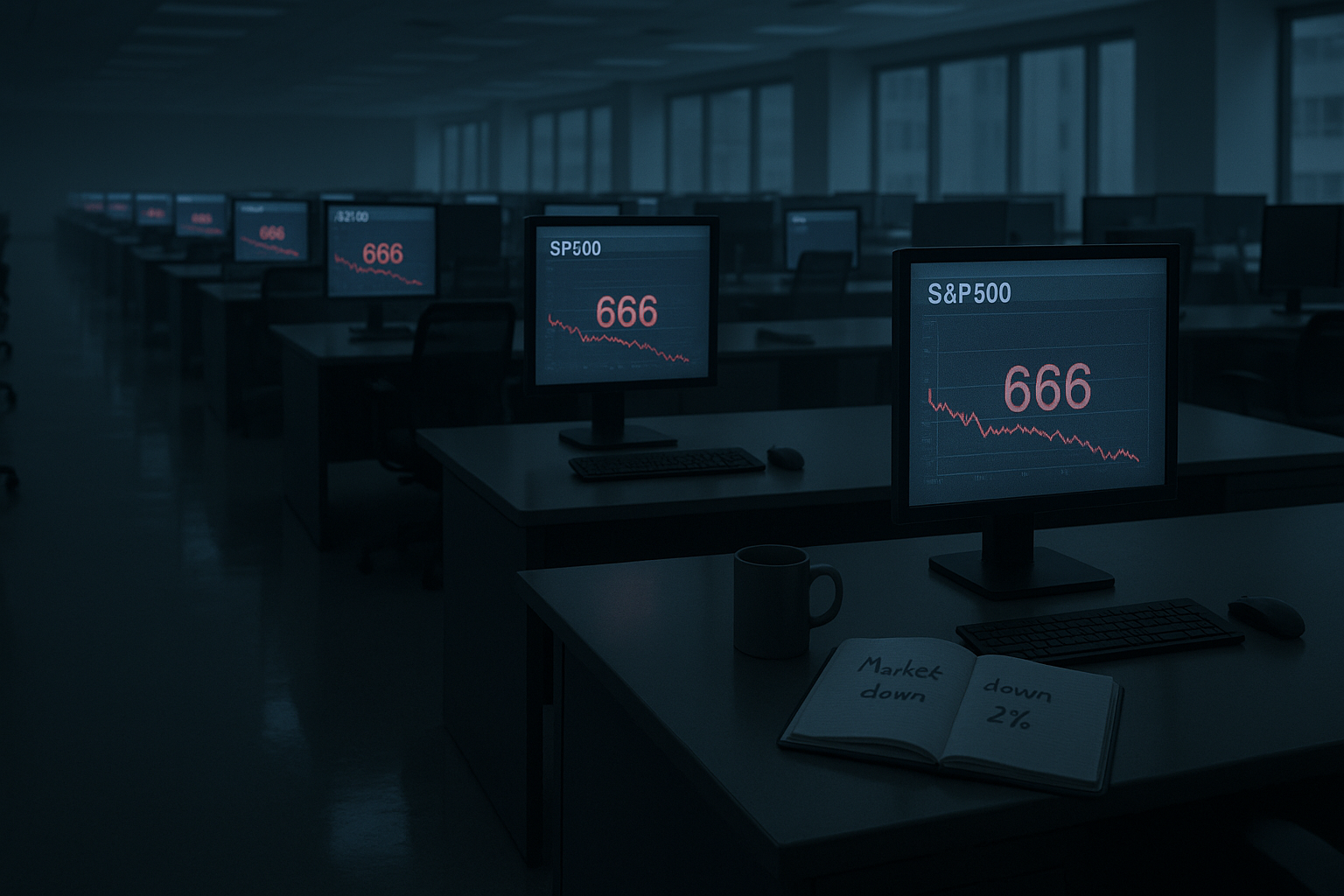I was sorting through old trading journals last weekend when I found my notes from March 2009. Reading them sent a chill down my spine.
That month—specifically March 6th—marked the absolute bottom of the Great Financial Crisis, with the S&P 500 touching that devilish 666 level. But here's what haunts me still: how utterly... normal it felt at the time.
By March 2009, we weren't experiencing terror anymore. Terror requires energy. What we felt was something more insidious—a bone-deep resignation that had settled in after six months of financial cardiac arrest.
"Market down another 2% today," I'd scribbled on March 4th. No exclamation point. No underline. The notation had all the emotional resonance of recording the day's weather. Cloudy with a chance of economic collapse.
That's the thing about true bottoms that nobody tells you. They don't announce themselves with trumpets and sirens. They whisper.
The headlines that week? Pure nightmare fuel. AIG had just reported a quarterly loss of $61.7 billion—a number so large it seemed like a typo. General Motors was openly discussing bankruptcy as if it were simply the next item on a corporate to-do list. Unemployment had hit 8.1% and was climbing faster than a cat up a curtain.
Even Warren Buffett—our economic North Star—sounded rattled. In his annual letter, he'd admitted to "some dumb things." When the Oracle of Omaha starts questioning himself, you know we're in uncharted territory.
I remember walking through the trading floor of the hedge fund where I worked back then. Our morning meetings had taken on this gallows-humor quality that seems almost perverse in retrospect. We'd methodically go through overnight market moves (all terrible), discuss which financial institution might be the next domino to fall, then debate which supposedly rock-solid companies might reveal themselves as elaborate Ponzi schemes.
"So," my boss would say, rubbing his eyes after another sleepless night, "who's going bankrupt today?" And we'd laugh—not because it was funny, but because the alternative was crying.
Looking back, the technical signs of a bottom were actually there, hiding in plain sight like your keys when you're already late for work. The VIX had started its descent from panic-induced heights. Trading volumes were declining. The rate of new lows was decreasing. But who had the courage to call it?
The few analysts brave enough to suggest stocks might—just might—represent value were treated like they'd suggested investing in beachfront property on Mars. I watched a value manager get practically laughed off CNBC after suggesting bank stocks were oversold. Poor guy probably made a fortune later.
We'd been burned too many times by false bottoms. Remember that October rally that sucked everyone in? By March, even the most starry-eyed optimists had been beaten into submission. The prevailing wisdom wasn't just bearish—it was existential. People weren't asking when the market would recover; they were questioning whether capitalism itself still functioned.
The media coverage reflected this collective despair. Barron's ran a cover asking "DO STOCKS STILL WORK?" (Spoiler alert: yes, they do). Newsweek declared "WE ARE ALL SOCIALISTS NOW." When mainstream financial publications start questioning the fundamental premise of markets... well, that's usually a contrarian indicator so powerful it practically glows in the dark.
But who could see it then? That's what I find most remarkable about that period. The greatest buying opportunity of a generation coincided almost perfectly with the moment when it felt most impossible to buy.
Some did, of course. Not because they were clairvoyant, but because they were either:
Systematic investors who kept buying according to plan, emotions be damned.
Or contrarians who'd lived through enough cycles to recognize that the apocalypse rarely arrives precisely as scheduled.
Those people made out like bandits. The market would rocket nearly 600% over the next thirteen years. But sitting there in March 2009, such returns seemed as likely as pigs developing wings and a fondness for aviation.
The real lesson isn't the tired advice to "be greedy when others are fearful." That's bumper-sticker wisdom that's nearly impossible to implement when your portfolio is in flames.
No, the actual insight is more subtle: market bottoms occur not when things get better, but when they stop getting worse. And that inflection point? You'll never—and I mean never—spot it in real time.
So the next time markets are in free fall and your stomach feels like it's somewhere around your ankles, remember March 2009. It didn't feel like opportunity. It felt like the end.
It wasn't.
